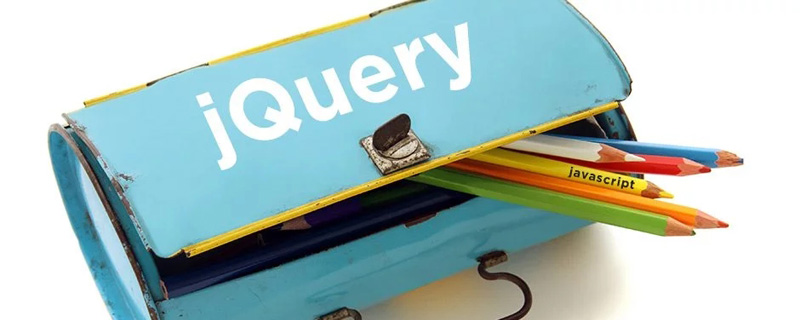Difference: 1. html() can set read-only tags such as tbody and tr, but innerHTML does not work in lower versions of IE and cannot be assigned. If a value is assigned, the script will report an error; 2. The script set by html() The script will be executed, but the script set by innerHTML will not be executed.

Recommended tutorial: jquery video tutorial
InnerHtml() and html() Difference
##1. html() can set read-only tags such as tbody and tr, but innerHTML cannot be used in lower versions of IE
In a In HTML documents, we can use the .html() method to obtain the content of any element. If the selector matches more than one element, only the HTML content of the first matching element will be retrieved. innerHTML is the entire content from the starting position to the ending position of the object, including the Html tagI originally thought that innerHTML and the html in jquery were actually exactly the same, and jquery was superfluous. , until I encountered a problemLook at an example:var tbody=document.createElement('tbody'); tbody.innerHTML='<tr><td>IE下tbody的innerHTML是只读的</td></tr>'; //在IE下报错,目标对象错误Now try using jquery’s html,
$(tbody).html('<tr><td>IE下tbody的innerHTML是只读的</td></tr>');I found that jquery can be displayed correctly under IE, but no any problem. After checking the information, I found out: jQuery's html() has done some fault-tolerance processing. The native Dom API innerHTML does not support some elements, such as table tr and other elements, and tbody under IE. InnerHTML such as , tr and so on are read-only and do not allow writing, but there is no problem in other browsers. Jquery uses try and catch to detect. If an error is reported, this.empty().append(value) is called again in catch, and the string is added through append. The innerHTML of some elements in IE is read-only: In IE6, IE7, IE8, IE9 col, colGroup, frameSet, html, head, style, table, tBody, tFoot The innerHTML attributes of , tHead, title, tr are read-only and cannot be assigned. If they are assigned, the script will report an error. In IE10, the innerHTML of these tags has been changed to be writable. Since the innerHTML attributes of these tags are read-only in IE6-IE9, we try to avoid assigning values to the innerHTML attributes of these tags. For example, the innerHTML of table can be changed to the table parent element (assuming it is p)'s innerHTML attribute assignment.
2. The script set by html() will be executed, but the script set by innerHTML will not be executed.
Because jQuery will force the script tag in the parameter string to take effect (by create and replace), but the .innerHTML assignment will not.$('#app').html('<script>alert(1)</script>') // 会弹出警告框
$('#app')[0].innerHTML = '<script>alert(1)</script>' // 不会弹出警告框
// ↑使用[0]将jquery对象转为dom对象,只有dom对象才有innerHTML方法,jQuery没有。Extended information:
Advantages of the html() function
Look at the shortcomings of the innerHTML attribute, and you will know the advantages of the html() function in jQuery The advantage is that it is compatible with all browsers. There is no problem that HTML5 tags are not supported, there is no problem that href and src attributes are converted, and there is no problem that some tags cannot set HTML strings. In short, in one sentence, it is basically Everything is worry-free, at least in terms of functionality.Disadvantages of the html() function
It seems that jQuery's html() function seems to be infinitely perfect, but in fact it is not. Its perfection only reflects its function. It is compatible with all browsers, including IE. But it happens to be IE. Although it is compatible, the performance is not optimistic. If you use the html() function to set a large amount of html string, it will be a disaster. How low is the performance of the html() function under IE? The computer configuration is "i5 quad-core, 8G memory, IE9". I tested using the html() function to set a table with 2000 rows and 4 columns, and the average time it took was 27 seconds! What is the specific reason why html() is so slow under IE? I have briefly read the source code and feel that using the try method is one of the main reasons. Interested students can study it in depth. For more programming-related knowledge, please visit:Introduction to Programming! !
The above is the detailed content of What is the difference between innerHTML and html() in jquery?. For more information, please follow other related articles on the PHP Chinese website!
 jquery实现多少秒后隐藏图片Apr 20, 2022 pm 05:33 PM
jquery实现多少秒后隐藏图片Apr 20, 2022 pm 05:33 PM实现方法:1、用“$("img").delay(毫秒数).fadeOut()”语句,delay()设置延迟秒数;2、用“setTimeout(function(){ $("img").hide(); },毫秒值);”语句,通过定时器来延迟。
 axios与jquery的区别是什么Apr 20, 2022 pm 06:18 PM
axios与jquery的区别是什么Apr 20, 2022 pm 06:18 PM区别:1、axios是一个异步请求框架,用于封装底层的XMLHttpRequest,而jquery是一个JavaScript库,只是顺便封装了dom操作;2、axios是基于承诺对象的,可以用承诺对象中的方法,而jquery不基于承诺对象。
 jquery怎么修改min-height样式Apr 20, 2022 pm 12:19 PM
jquery怎么修改min-height样式Apr 20, 2022 pm 12:19 PM修改方法:1、用css()设置新样式,语法“$(元素).css("min-height","新值")”;2、用attr(),通过设置style属性来添加新样式,语法“$(元素).attr("style","min-height:新值")”。
 jquery怎么在body中增加元素Apr 22, 2022 am 11:13 AM
jquery怎么在body中增加元素Apr 22, 2022 am 11:13 AM增加元素的方法:1、用append(),语法“$("body").append(新元素)”,可向body内部的末尾处增加元素;2、用prepend(),语法“$("body").prepend(新元素)”,可向body内部的开始处增加元素。
 jquery怎么删除div内所有子元素Apr 21, 2022 pm 07:08 PM
jquery怎么删除div内所有子元素Apr 21, 2022 pm 07:08 PM删除方法:1、用empty(),语法“$("div").empty();”,可删除所有子节点和内容;2、用children()和remove(),语法“$("div").children().remove();”,只删除子元素,不删除内容。
 jquery中apply()方法怎么用Apr 24, 2022 pm 05:35 PM
jquery中apply()方法怎么用Apr 24, 2022 pm 05:35 PM在jquery中,apply()方法用于改变this指向,使用另一个对象替换当前对象,是应用某一对象的一个方法,语法为“apply(thisobj,[argarray])”;参数argarray表示的是以数组的形式进行传递。
 jquery on()有几个参数Apr 21, 2022 am 11:29 AM
jquery on()有几个参数Apr 21, 2022 am 11:29 AMon()方法有4个参数:1、第一个参数不可省略,规定要从被选元素添加的一个或多个事件或命名空间;2、第二个参数可省略,规定元素的事件处理程序;3、第三个参数可省略,规定传递到函数的额外数据;4、第四个参数可省略,规定当事件发生时运行的函数。
 jquery怎么去掉只读属性Apr 20, 2022 pm 07:55 PM
jquery怎么去掉只读属性Apr 20, 2022 pm 07:55 PM去掉方法:1、用“$(selector).removeAttr("readonly")”语句删除readonly属性;2、用“$(selector).attr("readonly",false)”将readonly属性的值设置为false。


Hot AI Tools

Undresser.AI Undress
AI-powered app for creating realistic nude photos

AI Clothes Remover
Online AI tool for removing clothes from photos.

Undress AI Tool
Undress images for free

Clothoff.io
AI clothes remover

AI Hentai Generator
Generate AI Hentai for free.

Hot Article

Hot Tools

SAP NetWeaver Server Adapter for Eclipse
Integrate Eclipse with SAP NetWeaver application server.

EditPlus Chinese cracked version
Small size, syntax highlighting, does not support code prompt function

Dreamweaver Mac version
Visual web development tools

Notepad++7.3.1
Easy-to-use and free code editor

VSCode Windows 64-bit Download
A free and powerful IDE editor launched by Microsoft






